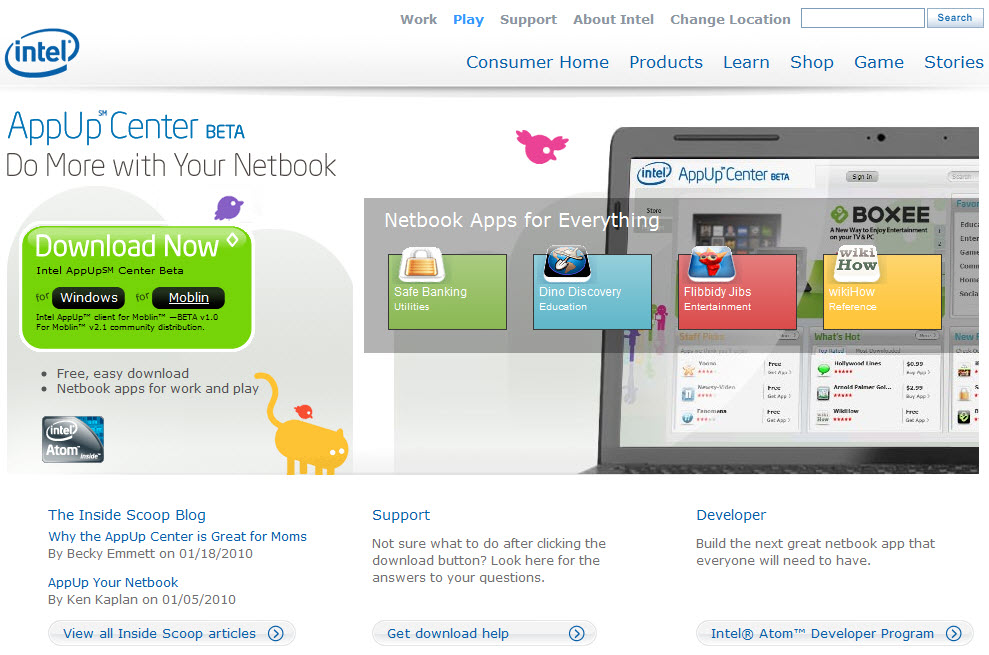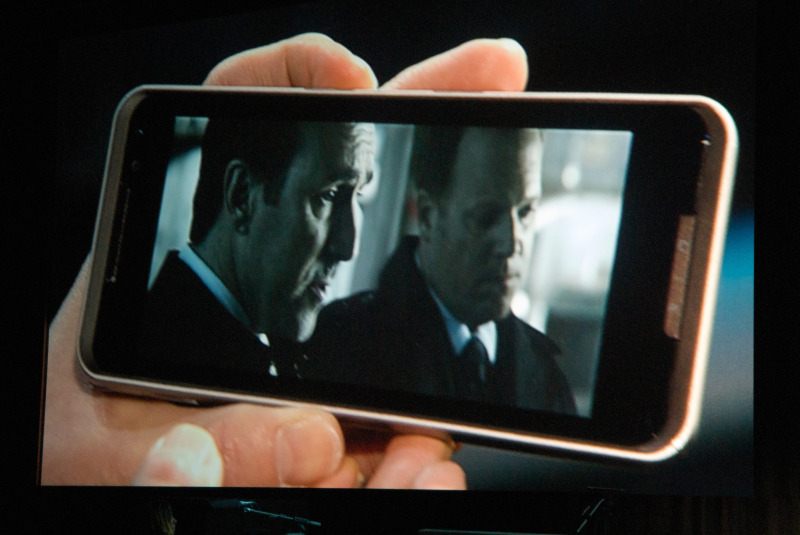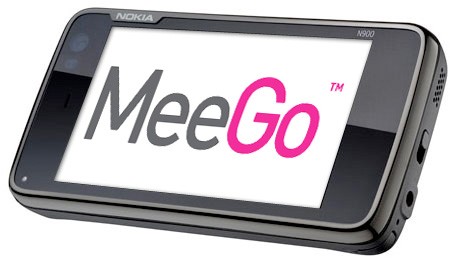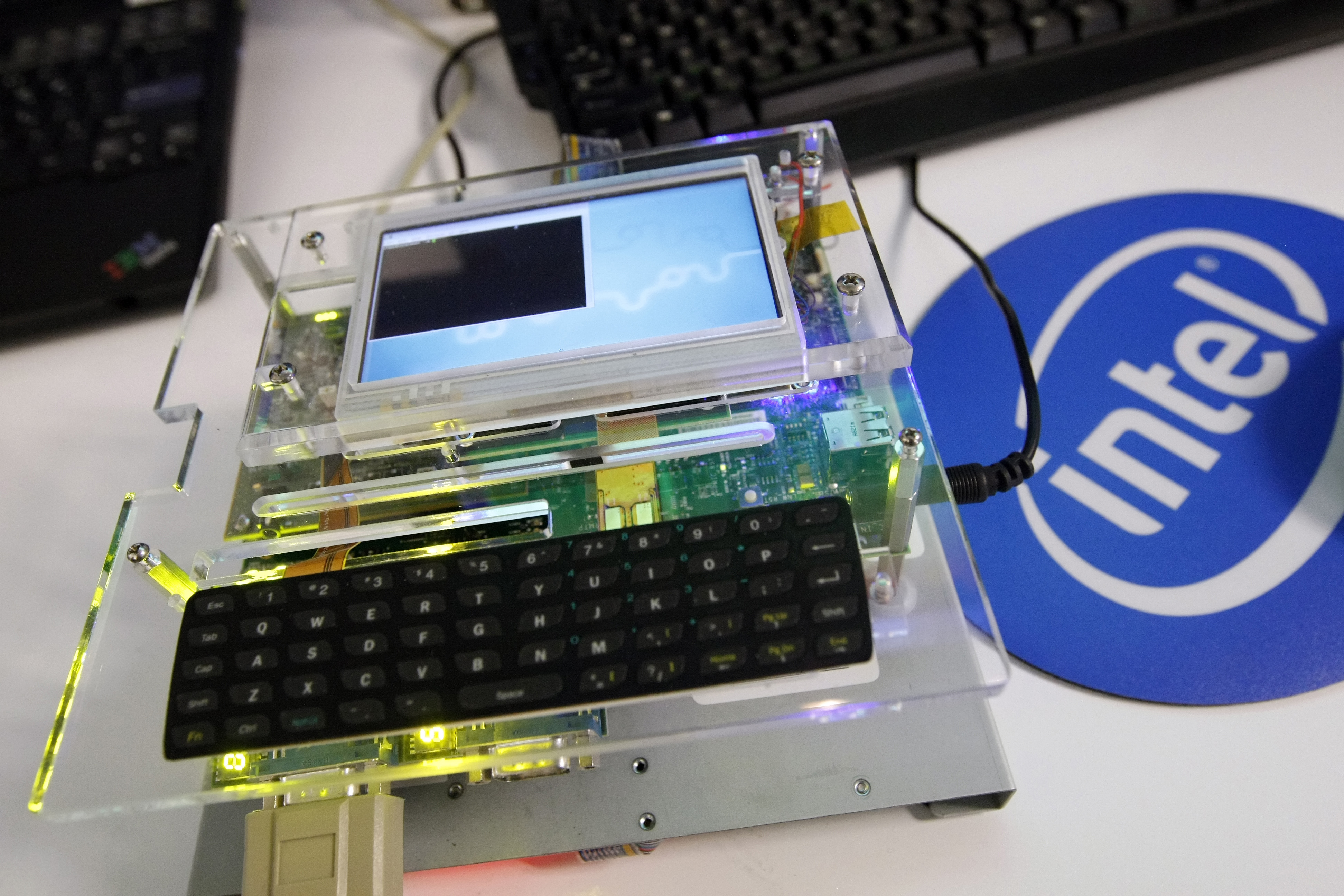Meet Moorestown: Intel's Atom Platform For The Next 10 Billion Devices
Intel’s second-gen Atom platform, Moorestown, positions the chip giant to have a killer smartphone and MID platform in 2010. The old Atom Z5xx drawbacks seem fixed. Why does Moorestown rock, and will it be enough to let Intel advance in this market?
The Experience
Hardware without software makes for a very nifty doorstop. As mentioned earlier, Intel has developed a tight allegiance to the Linux-based MeeGo OS, formerly known as Moblin before Intel and Nokia partnered to develop and promote it more heavily. MeeGo gives Intel the ability to have one environment span across the embedded, handset, MID, and netbook/nettop segments with a unified software stack. Of course, these days you can’t touch a phone platform without first asking about app support and a foofy app store front end.
Well, Intel does have an app store for MeeGo: the awkwardly named AppUpCenter. When AppUp was announced last January at CES, Intel promised that netbook OEMs would be supporting it. However, Intel’s site is still in beta, and it remains to be seen how much third-party support materializes. According to Austrialia’s TechWorld, AppUp passed the 200-title mark last month, and that was with Intel motivating developers with some monetary incentives.
Am I going to declare MeeGo a sure success in the making? Only about as fast as I’ll expect an effective overhaul of American healthcare. In both cases, you’ve got a big player fighting uphill against a much larger, deeply entrenched, and competing infrastructure. I wish Intel all the best on this front, but my money is on Android being a bigger hit. I’m not sure that Nokia’s allegiance to MeeGo, which is now effectively Maemo 6, will be enough to propel into the top OS ranks.
As of today’s launch on May 4, 2010, it’s anybody’s guess what will happen with MeeGo. On one hand, just a week ago, we saw the LG GW990 phone officially vanish into pre-release hell. The GW990 had been the Moorestown poster child ever since CES in January. I should have suspected something amiss in the air when Intel only focused on the Aava Mobile and OpenPeak designs at the Moorestown briefing, almost totally ignoring the GW990. Could this be fallout from Intel’s bosom-buddying up with Nokia and the fact that Nokia released its first MeeGo port for the N900 to developers a month earlier?
Of course, some users won’t care. So long as devices sync properly with user data, whether local or cloud-based, and run the applications the user needs in a way that’s compelling and effective, that will be enough for plenty of buyers. I got to fiddle about with the Aava Mobile smartphone and OpenPeak tablets for a few minutes at Intel’s briefing, and my first impressions of MeeGo were very positive. Is it better than iPhone OS or Android? Am I going to marry it based on the hands-on equivalent of a MySpace posting? It’s way too early for answers. Let’s do some premarital cohabitation with a review unit or two and see where things lead.
I will say this: MeeGo delivers a solid, impressive graphical UI. I’ve seen it multitask first-hand, felt the responsiveness of its touch interface, and admired its wicked 3D navigation models. Yes, I also saw it hiccup once or twice. Despite its Linux roots, MeeGo still has plenty of refinement in its future. To give you an idea, I saw the Aava Mobile reference handset running MeeGo and one photo management app in which one thousand 5-megapixel images were arrayed in a grid on the screen, represented as tiles so small they only looked like colored dots the size of a few pixels. With a few finger drags, the user could zoom into this grid however much he or she wanted, even up to 100% full size. It was like Google Maps meets My Photos.
That was cool, but the part that really blew my mind was when the presenter zoomed all the way out and said, “Now, what if I want to resort these images by their dominant color?” With a couple of taps and the time it took for a quick screen wipe, all of those tiny tiles reorganized themselves into a continuous progression organized by tone gradients. Imagine having this kind of filtering capability according to other content variables, such as the presence of blue sky or human faces—on a phone!
Get Tom's Hardware's best news and in-depth reviews, straight to your inbox.
When I asked Intel reps why they were going to market first with a relative no-name like Moblin/MeeGo when Android was seemingly so close to being ready, one team member answered with a wry grin that in a process as intricate and critical as a new platform launch, it made sense to focus first on a software infrastructure that offered Intel the most direct control. No doubt, control and timeliness were also key factors in Microsoft’s omission.
The Archos 9 tablet supports Windows 7 on Silverthorne, so we have a strong suspicion that Moorestown could shake hands with Redmond if developers were so inclined. However, there remains so little momentum behind Microsoft in the consumer ultramobility spaces and so little track record of Windows-on-Menlow success that it’s no surprise Microsoft remains wholly absent from Intel’s platform launch. On the other hand, we did get to see Android running on a handset, albeit one that was dissected and mounted on a lab test bed much like the one below.
-
yannifb Huh, i wonder how this will compete with Bobcat, which supposedly will have 90% of desktop chip performance according to AMD.Reply -
descendency Why isn't this a 32nm product yet? If your concern (which it would be with said devices) is power consumption, shrinking the die can only help...Reply -
Greg_77 silverx75Man, and the HTC Incredible just came out....Man, and I just got the HTC Incredible... ;)Reply
And so the march of technology continues! -
well we can only wait till amd gets their ULV chips out with their on die graphics so we can get a nice comparison.Reply
-
williamvw descendencyWhy isn't this a 32nm product yet? If your concern (which it would be with said devices) is power consumption, shrinking the die can only help...Time to market. 45 nm was quicker for development and it accomplished what needed to get done at this time. That's the official answer. Unofficially, sure, we all know 32 nm will help, but this is business for consumers. Right or wrong, you don't play all of your cards right away.Reply
-
seboj I've only had time to read half the article so far, but I'm excited! Good stuff, good stuff.Reply -
burnley14 This is more exciting to me than the release of 6-core processors and the like because these advances produce tangible results for my daily use. Good work Intel!Reply -
ta152h Do we really need x86 plaguing phones now? Good God, why didn't they use a more efficient instruction set for this? Compatibility isn't very important with the PC, since all the software will be new anyway.Reply
I like the Atom, but not in this role. x86 adds inefficiencies that aren't balanced by a need for compatibility in this market.



